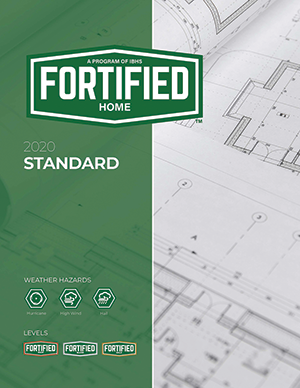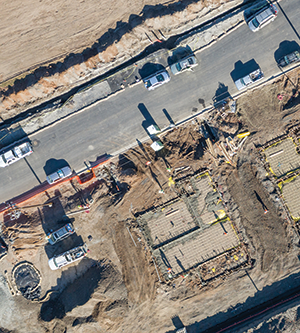IBHS releases 2020 FORTIFIED Home™ standard

|
The Insurance Institute for Business & Home Safety has released its updated 2020 FORTIFIED Home standard.
Established in 2010, FORTIFIED is a voluntary construction and reroofing program designed to strengthen homes and commercial buildings against specific types of severe weather. Nearly 7,000 homes received FORTIFIED designations in 2020, and the total number of U.S. homes with FORTIFIED designations is more than 22,000.
FORTIFIED Home requirements provide a systems-based, multitiered approach for improving the resistance of homes to damage caused by hurricanes, high winds and hail. The FORTIFIED Home standard goes beyond building code requirements with a series of enhancements to strengthen vulnerable parts of a home, starting with the roof system. It includes three progressive levels of protection for new and existing homes tailored to weather hazards faced in different geographic regions.
Periodic updates to the FORTIFIED Home standard are based on testing at the IBHS Research Center. Some updates also are intended to simplify use. The 2020 standard emphasizes the importance of strong garage doors by expanding a requirement for adequate garage door design pressure ratings at the FORTIFIED Silver™ level across all regions. Technical updates help ensure the standard is consistent with changes in the model building code and ASCE 7-16, “Minimum Design Loads and Associated Criteria for Buildings and Other Structures.” In addition, the standard’s compliance forms now are simplified.
“FORTIFIED Home has shown in lab tests and real-world events to minimize damage caused by high winds, wind-driven rain and hail, and as our research progresses so will our standard,” says Fred Malik, managing director of the FORTIFIED program. “These latest updates further our mission to strengthen homes against natural disasters, arming builders and roofing contractors with a system to meet the demands of their customers and making it possible for those homeowners to achieve the peace of mind that comes from proactively taking steps to reduce the impact of Mother Nature.”
The 2020 FORTIFIED Home standard is effective for projects permitted on or after Nov. 1, 2021. The standard and a summary of changes are available at fortifiedhome.org/standard-2020.
FAA approves first unmanned automated drone flights

|
On Jan. 15, the Federal Aviation Administration granted its first approval for a company, American Robotics, Marlborough, Mass., to operate automated drones without human operators on job sites.
The FAA approved American Robotics’ Scout System, which includes acoustic detect-and-avoid technology that keeps drones safely distanced from other aircraft.
The FAA’s approval is a step toward a future of unmanned drone operation. Two days before the American Robotics announcement, the FAA announced plans to issue $5.8 million in research, education and training grants to universities that are part of the agency’s Air Transportation Center of Excellence for Unmanned Aircraft Systems to pay for special projects not specifically related to the construction industry.
In the construction industry, unmanned automated drones could help contractors accumulate building information data, monitor progress on job sites and check for safety hazards without needing certified pilots.
In 2019, the FAA gave a waiver to Greeley, Colo.-based general contractor Hensel Phelps to fly parachute-equipped drones over populated construction sites. Drone flights over populated areas are prohibited under general FAA drone rules. The waiver means Hensel Phelps and other construction firms cleared by the FAA in the future can fly drones over active job sites.
Roofing Alliance funds virtual reality safety research

|
The Roofing Alliance is funding a virtual reality and safety research program through Mississippi State University, Starkville.
MSU’s proposal, “Evaluating the Efficacy of Virtual Reality Technology for Improving Worker Safety,” was approved for funding in April 2020.
A Roofing Alliance task force is working with a team from MSU to develop a virtual reality training module for the roofing industry focused on ladder safety and an overall assessment of rooftop safety. The program is intended to help train new hires and entry-level workers with no previous experience. Participants will use virtual reality to experience what it feels like to climb a relatively tall ladder and understand some key concepts of ladder safety.
“It’s intended to be part of a new hire’s onboard training before they actually go up on the roof,” says Josh Kelly, chairman of the Roofing Alliance task force. “We provided faculty with some elements that are to be included such as assessing the job site for best ladder location; selecting which ladder to use based on building height; and weight rating, inspecting, setting up and securing a ladder.”
The task force team also has worked with MSU to develop a building information modeling strategy for the research and deliverables.



